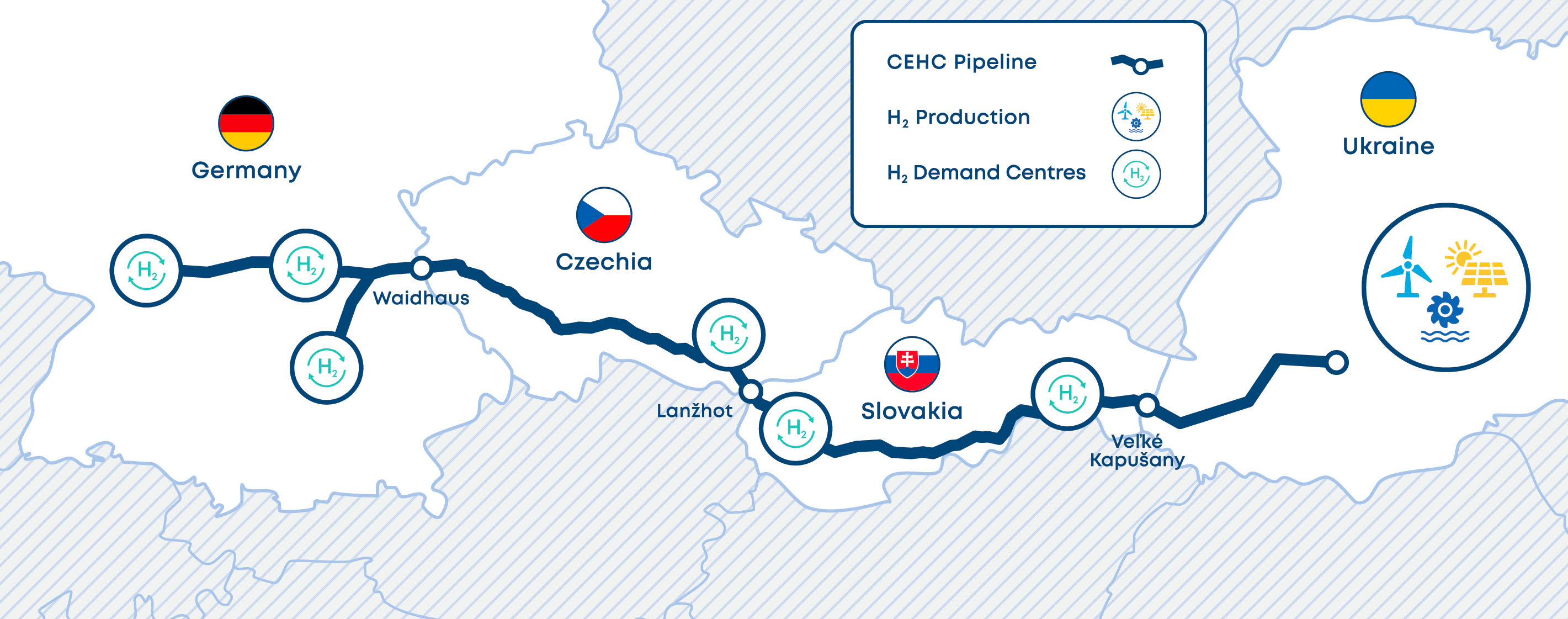Project vision
The Central European Hydrogen Corridor (CEHC) initiative was launched in 2021 by four gas infrastructure companies (OGE, NET4GAS, eustream, Gas TSO of Ukraine) driven by the vision to develop a hydrogen “highway” through Central Europe. The initiative explores the feasibility of creating a hydrogen pipeline corridor in Central Europe for transporting hydrogen from major hydrogen supply areas in Ukraine via Slovakia and the Czech Republic to hydrogen demand areas in Germany. The hydrogen corridor will also enable the transport of hydrogen between hydrogen production facilities and hydrogen consumers in the Czech Republic and Slovakia.
The CEHC Initiative believes that such a corridor for the transportation of hydrogen from Ukraine to Germany can be created based on repurposed existing gas infrastructure, combined with targeted investments in new dedicated hydrogen pipelines and compressor stations. This enables dedicated hydrogen transport over long distances at affordable costs.
The CEHC initiative is open to forming partnerships with hydrogen producers, large hydrogen consumers and other gas infrastructure companies to help facilitate the production and consumption of hydrogen in Central Europe.
Project overview
Ukraine is a very promising future major supply area of hydrogen that offers excellent conditions for large-scale, green hydrogen production. Ukraine is also well connected to Europe by its large natural gas pipeline system that can be repurposed to transport hydrogen to Central Europe.
Slovakia and Czechia are operating a large natural gas pipeline corridor connecting Ukraine with European demand areas. The Slovak and Czech gas pipeline systems can also be repurposed to transport hydrogen.
Germany is expected to be one of the largest demand areas of hydrogen in Europe. Importing significant amounts of hydrogen is essential to meet projected demand in this region.

1,225 km
LENGTH

1,000 - 1,500 million EUR
INVESTMENT

144 GWh/d
CAPACITY

2030
IMPLEMENTATION
The 1,225-kilometer part of the Central European Hydrogen Corridor from the Ukrainian/Slovak border to large hydrogen demand areas in Southern Germany requires an estimated total investment of 1,000 – 1,500 million EUR. The relatively low investment cost estimate includes necessary upgrades of pipelines, cross-border stations, and selected compressor units, and is significantly lower than the cost of building a new hydrogen infrastructure. The investment costs of the Ukrainian part of the corridor will depend on the exact location of the hydrogen production sites in Ukraine.
The total expected levelized cost of hydrogen transmission is estimated to be in the range of 0.10 – 0.15 EUR/kg per 1,000 km, which is in the lower range of the cost estimated by the European Hydrogen Backbone initiative of 0.11 – 0.21 EUR/kg per 1,000 km.
Project timeline


